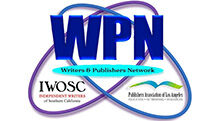 by Bobbie Christmas
by Bobbie Christmas
Q: When and when not does one place a comma in front of the word “as?”
A: Sorry, but no absolute rule exists for commas as they relate to the word “as,” especially when the word has more than ten meanings. Look at all the ways “as” can be used:
- To the same extent or degree; equally: The baby smelled as fresh as a new morning.
- For instance: domestic animals, as the cat or dog.
- When taken into consideration in a specified relation or form: This report as opposed to the first one.
- To the same degree or quantity that. Often used as a correlative after so or as: The crash was not so bad as the news media described it.
- In the same manner or way that: Walk as a model walks.
- At the same time that; while: I tore my stockings as I danced on the rough floor.
- For the reason that; because: I read the reports, as I was interested.
- With the result that: He was so foolish as to lie.
- Though: Skilled as the athlete was, he exhibited poor sportsmanship.
- In accordance with which or with the way in which: The business trip was boring, as expected.
- That; which; who. Used after same or such: Mary ordered the same meal as John did.
- In the role, capacity, or function of: She stepped in as teacher.
- In a manner similar to; the same as: The students protested as one.
Note some examples called for commas and others did not. Instead of looking for absolute rules about a comma before or after a specific word, examine how the word is used in each case.
As (see?) an added note regarding creativity, the word “as,” perhaps because of its many meanings, is the one word I see most overused in manuscripts I edit. Consider changing or deleting as (ugh!) many uses of that word as (whoops!) possible.
Q: What are the rules regarding commas before “too?” In the following sentence, is the comma correct? I’ll take a bagel and some cream cheese, too.
A: You have the right to be confused. The Chicago Manual of Style for years advocated a comma in the case of your example. The most recent edition, the seventeenth, changed its stance, though. It now says that generally no comma is needed when the adverbs “too” or “either” are used in the sense of “also.” Currently correct: I’ll take a bagel and some cream cheese too.
Q: My writer’s group debates grammar and word usage rules, including using commas in a series or to set off introductory phrases. What’s your take on those issues?
A: My take isn’t what’s important in this case. What matters is the style guide your group wants to follow for consistency. If your group members are writing books, the group should adhere to the guidelines in The Chicago Manual of Style, which says to use commas in a series. Example: Red, white, and blue banners hung off the building. It also states that commas are not needed after short introductory phrases (about five words or fewer) unless needed for clarity. Examples: After the moon rose I walked into the backyard. When he tired of New York City, he moved to Dubuque.
If your group members write for magazines, rather than books, they need to follow whatever style guide the intended magazine or magazines use. AP style, which many but not all periodicals follow, has a different set of rules for commas. I no longer follow AP style, but its stylebook is available online, as is The Chicago Manual of Style.
Bobbie Christmas, book editor, author of Write In Style: Use Your Computer to Improve Your Writing, and owner of Zebra Communications, will answer your questions, too. Send them to Bobbie@zebraeditor.com. Read more Ask the Book Doctor questions and answers at www.zebraeditor.com.
